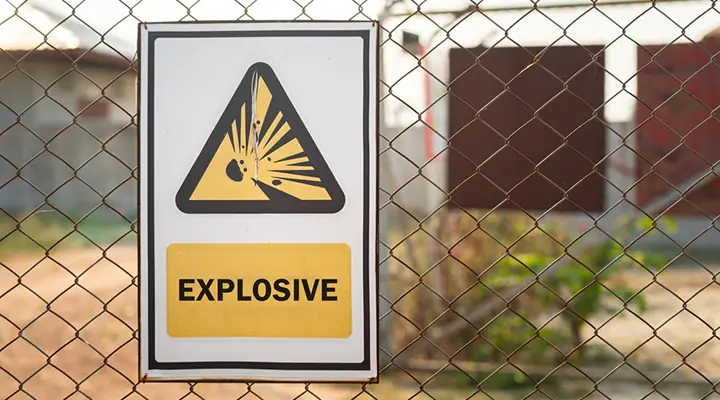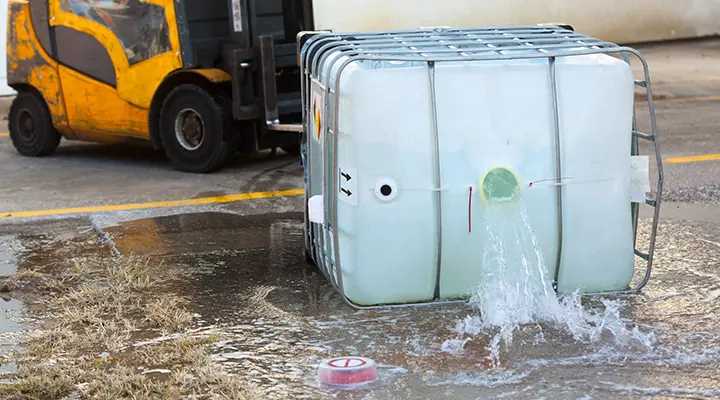Spills in the workplace are common, they can range from a minor inconvenience to a major disaster. Chemical and oil spills can not just harm people’s health, they can damage the environment, and have a negative impact on a business. Whether it’s a small oil leak or a large chemical spill, effective spill management is critical to mitigate hazards and ensure a safe working environment.
This article looks at best practices for managing spills in the workplace. It outlines what organisations should do to prepare for spills and what should staff do when a spill happens.
Understanding the risks from spills
Spills can occur in various settings, from manufacturing plants to office environments. The key risks of concern are to human health, the environment and the organisation.
Employees health
Businesses use a wide range of chemicals that could be harmful to people’s health. These chemicals can cause allergic reactions, chemical burns, sickness from ingestion and lead to serious long-term illnesses. Also, oil spills can create slippery surfaces, leading to slip and fall accidents.
The environment
Spills can pollute the environment by getting into the air, the water system or soil. Contaminants, chemicals and other hazardous substances could get into the water supply and the soil through drains. This can contaminate crops that humans and animals eat, contaminate drinking water, or kill fish and other aquatic animals.
The business
Spills in the workplace can have significant financial consequences for a business. A spill might lead to temporary closure of premises and shutdown of operations while the spill is being dealt with. This downtime can result in lost productivity and revenue, especially if the business relies on continuous operations. Also, an organisation may face large fines for failing to comply with environmental laws and safety regulations. Furthermore, a spill can harm a company’s reputation, which could lead to long-term financial impact.
Most common spills accidents
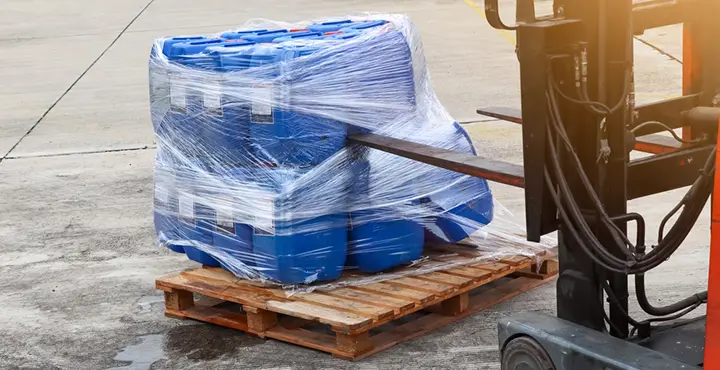
Chemical and oil spills in the workplace can occur for a variety of reasons. Here are six common causes:
- Human error
Mistakes made by employees, such as improper pouring, overfilling containers, or not securing lids can lead to spills.
- Equipment failure
Malfunctioning or poorly maintained equipment, such as pumps, taps, or storage tanks, can result in leaks or spills.
- Poor handling
Spills can occur when handling chemicals within the workplace, whether by forklift, conveyor belt, or manual handling.
- Inadequate storage
Storing chemicals inappropriately, such as in unsuitable or damaged containers, can lead to accidents. Also, certain chemicals may react with each other or with environmental conditions, leading to leaks or spills.
- Environmental factors
Extreme weather, such as heavy rain or flooding can damage storage facilities and lead to spills.
- Inadequate training
Staff who are not properly trained in handling hazardous materials may not follow safety measures, increasing the risk of spills.
Preparing for a spill
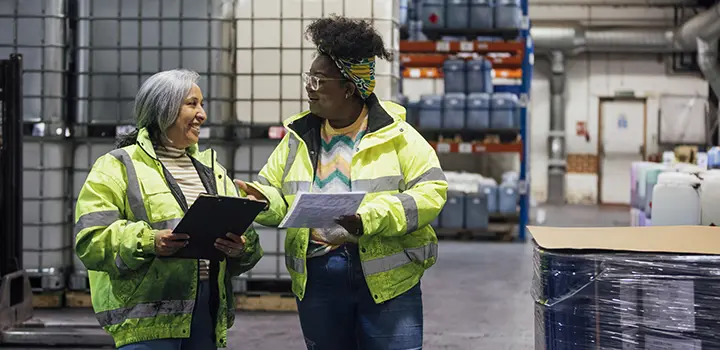
Spills do happen in the workplace, so it is important to prepare for the possibility of a spill. Here are several things that organisations should do to be prepared.
Spills risk assessment
Organisations should conduct a risk assessment, which includes any hazards that arise from spills. Then, they should put measures in place to protect staff from those hazards. This includes providing appropriate spill kits and PPE.
Emergency spill response procedure
Organisations should have an emergency response procedure which defines how staff will deal with spills.
Regular inspections
It is important to schedule and carry out regular inspections. You should check storage areas to identify if there are any leaking or damaged containers. Also, check that there are the right number of spill kits, they are complete, and they are packed in the correct order.
Clear signage, labels and storage
Place clear signage in areas where spills are likely to occur, reminding employees to handle materials carefully and report any spills immediately. Ensure all containers are appropriately labelled. Use spill containment solutions to catch leaks if they occur.
Regular Spills Training
Conduct regular training for employees on spill prevention and response. Also, ensure that staff are aware of the substances they are working with, and the potential risks involved. Spill Kit training is an easy way for workers to identify the typical contents of a spill kit and to understand how to use a spill kit safely and effectively.
Response to a spill
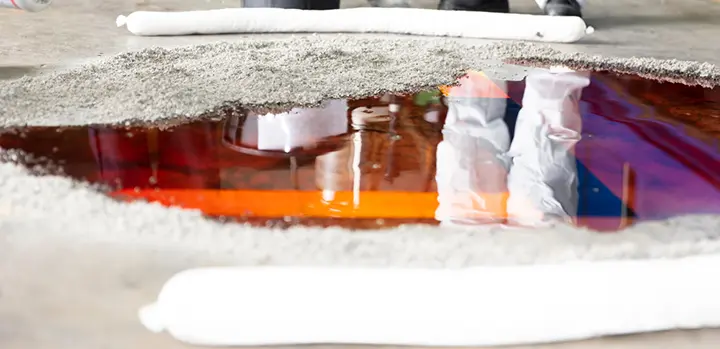
When a spill happens, follow these 8 steps. These steps, along with the correct equipment and training, will ensure that your spill response is both fast and effective.
1. Assess the spill
Quickly evaluate the type and extent of the spill. What substance has been spilt? Determine if the substance poses an immediate risk to health, safety or the environment. If the spill involves hazardous materials or poses a significant risk, evacuate the area and alert others. If you don’t know what the substance is, treat it as the most dangerous spill in your workplace.
2. Put on PPE
You should always use the required PPE no matter how small the spill is. Some spills may also require you to use a RPE (a respirator) to deal with the spill. You should find the required PPE in the spill kit or beside it.
3. Stop the source
Once you have put on PPE, see if you can stop the source of a spill. You may need to turn a tap, set a container upright, plug a leak, or place the leaking container in a larger one or in a bag.
4. Contain the spill
Use a barrier or absorbent materials to prevent the spill from spreading. Depending on what you have in the spill kit, you could pour granules round the edge of the spill, place socks or booms around the spill, lay pads or cushions on the edge of the spill or heap up earth or sand.
It is very important to not let spills flow into drains, gullies, waterways or straight onto soil. You can keep spills away from drains by using drain covers from the spill kit, absorbent pads around the drain, or by diverting the flow away from the drain.
5. Clean up the spill
Once you have contained the spill so it is no longer spreading or in danger of going into a drain, you can clean up the spill. To clean up a spill you can use granules or pads from a spill kit. Cover the spill completely and work from outside to inside.
6. Decontaminate area and dispose of waste
When you have cleaned the spill, you need to decontaminate the area and dispose of contaminated material. Put all contaminated waste into disposal bags from the spill kit, clean all surfaces and put all the cleaning materials into a disposal bag. Put contaminated PPE into a disposal bag. Seal and label the bag so everyone knows what is in it. Bag up non-disposable kit separately for decontamination. Finally, decontaminate yourself – thoroughly wash your hands and any areas of skin that have been exposed to the spill.
7. Report the spill
Fill in reports to document the spill, including the type of material, the cause, and the actions you have taken. This information is vital for future prevention measures – managers will review the reports to see what health and safety improvements can be made to reduce further incidents.
8. Replenish spill kit
The final step is to refill or replace the spill kit. Do this promptly so the spill kit is fully equipped the next time it is needed.
You can learn how to correctly refill spill kits in our online Spill Kit Training: Chemicals and Oils course.

